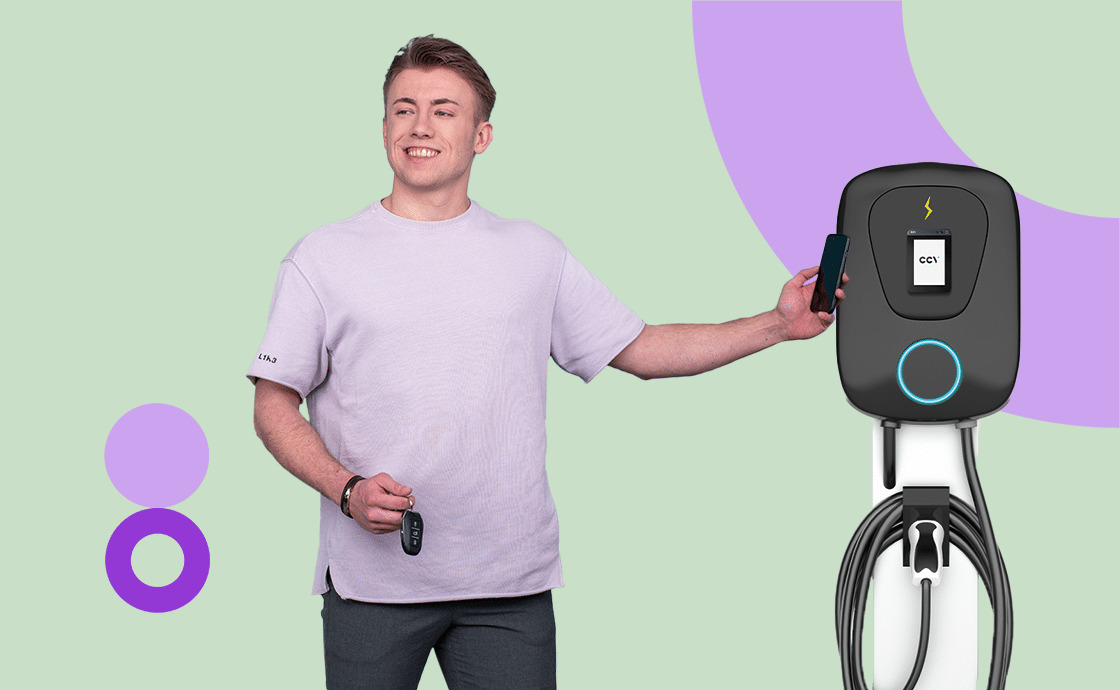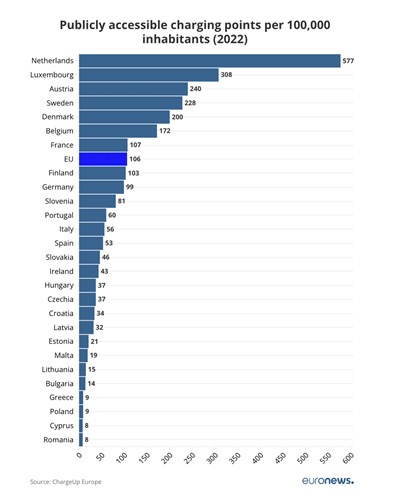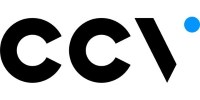CCV: Revolutionising Mobility - A Glimpse Into the Future of EV Charging and Payment in Europe

The European electric vehicle (EV) market is undergoing a remarkable transformation, and this applies to more than the development and growing popularity of sleek electric cars. There is a shift happening in the way we envision mobility. In this article, we’ll dive deeper into the current state of the European EV market, EV charging point developments, and some exciting prospects on the horizon. As we’re preparing for the upcoming London EV Show, we'll explore the rise of EVs, the progress made in the charging infrastructure, and what the future holds next for EV charging and payment solutions.
If you’re attending the EV Show too, let’s connect! You can meet me there at CCV’s booth, along with my colleagues Maria Joukovitch, Head of Mobility, Huib Leenknegt, International Partner Manager, and Pieter Peene, Commercial Product Manager.
The Rise of Electric Vehicles and Charging Stations in Europe
With the number of electric vehicles and charging stations steadily increasing, the EV revolution in Europe is in full swing. As of the latest EV statistics, there are over 5.5 million EVs on European roads of which nearly 3 million are full electric passenger cars and the others plug-in hybrid light commercial EVs. Norway, the Netherlands, and Germany are currently leading the charge. And with the diverse range of EVs available, from compact city cars to luxury SUVs, the market is already catering to various tastes and needs. Which is necessary, as legislation is bound to ban the sales of gasoline and diesel cars by 2035.
Meanwhile, various players in the charging infrastructure have been working hard to keep pace with the EV boom. In 2022 the number of public charging points even rose by 150 percent. Now, there are approximately 475,000 points across Europe, making it easier than ever for EV drivers to keep their batteries topped up. But the situation still requires some improvement:
Though charging infrastructure providers are already offering innovative solutions, including fast-charging stations along major highways, workplace charging, and home charging solutions, the spread of public charge points is still relatively uneven throughout Europe. Currently 24 percent of these charging points are located in the Netherlands.

Additionally, payment for EV charging still often happens via closed systems, requiring memberships, multiple apps, and various charge cards to connect (and pay) at particular charging point operators throughout Europe and even in your own country and neighbourhood. Especially for newcomers on the EV market this causes great frustration. The early adopters of electric vehicles were still highly motivated and would accept some inconvenience as part of their journey on the frontiers. But the people that are now switching to EVs expect ease and are often also less tech-savvy and change-oriented than their predecessors.
Though mobile apps are increasingly popular to locate charging points, check availability, and make payments, app requirements can still cause some frustration too. You may need multiple apps, all with different settings and interfaces, to be able to make use of the various charging networks along your journey. And when it comes to payment, according to consumer research, 65 percent of consumers want to be able to pay with their debit or credit card instead.
Therefore, to make things easier for drivers, not only should there be plenty of charging stations available, but paying for EV charging should also be open, transparent, fast, and easy. Open-loop payment solutions ensure that anyone can pay with their card, smartphone wallet, or web payment solution to charge their electric vehicle. No subscription or signup required.
So what progress has been made in this area until now?
Progress in the EV Charging Market
Fortunately for (wannabe) EV drivers, remarkable progress has been made in the EV charging market over the last few years. Charging points have become more ubiquitous, and their technology has advanced significantly. Besides home charging units becoming more affordable and easy to install, public charging networks have rapidly expanded, now providing both fast and slow charging options. All to ensure that more people can switch to electric vehicles and EV drivers are never far from a charging point.
Payment options for EV charging have also evolved. More and more charging stations now integrate options for traditional, open-loop payment methods. These methods enable transactions without requiring participants to hold an account with any specific app or financial institution and include options like credit card or debit card payment and payment with Apple Pay or Google Pay.
From a revenue point of view, adding open-loop payments may also be interesting for EV CPOs (Charge Point Operators) to not exclude any potential users. And rest assured for those who still enjoy their closed-loop systems, perhaps as drivers of company EVs: you can also use Mifare cards to pay for charging at charge points with those payment terminals.
And there’s another trend emerging: slow- and fast-charging corridors with multiple charge points that come with a central payment terminal. These charge points can be easily used by any EV driver and paid for with their own preferred payment method, similar to what drivers are used to at parking facilities. This makes the investment for the payment terminal much lower compared to the total solution. Especially for slow-charging stations this can be a lucrative solution to lower the costs per charge point. Furthermore, billing integration and transparent pricing structures are making the charging experience smoother for drivers and promoting more trust in the industry.
To sum it up, here are some of the major improvements that Europe has witnessed in the past decade regarding the infrastructure of EV charging:
- Expanded charging network: One of the most significant improvements has been the dramatic increase in the number of charging stations, with a growth of +150% in 2022.
- Fast-charging corridors: Europe has established a network of fast-charging corridors along major highways. This has made long-distance EV travel much more practical.
- Home charging solutions: Home charging units have become more affordable and easier to install. Many EV owners now have the option to charge their vehicles conveniently in their own garages or driveways, promoting EV adoption.
- Workplace charging: An increasing number of companies have installed charging stations at workplaces, encouraging employees to switch to electric vehicles and providing a convenient place to recharge during the workday.
- High-power charging: Europe has witnessed the rollout of high-power charging stations that can deliver a significant amount of energy to EVs in a shorter period of time.
- Interoperability: Efforts have been made to improve interoperability among different charging networks. This means that a single payment card or app can be used across multiple charging networks, simplifying the charging experience for EV drivers.
- Transparent pricing: Charging providers have worked on transparent and standardised pricing structures, ensuring that EV drivers know what to expect in terms of costs, enhancing trust and confidence in the charging infrastructure. Open-loop payment helps to create that transparency.
- Incentives and support: Various European countries have introduced incentives, subsidies, and policies to promote EV adoption and the expansion of charging infrastructure. The EU is even proposing to ban the sales of other cars (gasoline/diesel) by 2035.
- Innovative technology: Advancements in charging technology, such as bidirectional charging (V2G), have the potential to make EVs an integral part of the energy grid, offering benefits not only to EV owners but also to the energy ecosystem.
All of the improvements listed above have collectively transformed the European EV charging landscape, making electric mobility more practical, accessible, and appealing to a broader audience.
But what more is needed to provide a seamless and convenient experience for EV drivers?
With the rise and popularity of fast-charging corridors, enabling easy payment here is essential. And here are some of the key requirements we’ve identified to achieve this:
1 Standardised payment methods
Fast-charging corridors should support standardised payment methods such as credit/debit cards, mobile payment apps, and contactless payments. This allows users to pay using the payment option they are most comfortable with.
2 Improved interoperability
Charging networks along fast-charging corridors must be interoperable. This means that a single payment method or account should work across different charging providers, eliminating the need for EV drivers to sign up with multiple charging networks.
3 Transparent pricing
Nobody likes surprises when it comes to billing. Clear and transparent pricing structures should be in place, with charging providers displaying the cost per kilowatt-hour (kWh) or per minute, as well as any additional fees. This transparency helps EV drivers understand the cost of their charging session. The displays in open-loop payment terminals show what you will be paying, so there’ll be no surprises afterwards.
4 Real-time pricing information
Charging stations should provide real-time pricing information to users. This allows EV drivers to make informed decisions about when and where to charge, taking into account pricing variations.
5 Contactless payment terminals
Charging stations should have contactless payment terminals or readers, making it easy for EV drivers to initiate and complete transactions without the need to enter a PIN or remove a physical card from their wallet.
6 Emergency payment options
In case of technical issues or a lack of network connectivity, charging stations should offer alternative payment methods, such as emergency cards or phone numbers for customer support.
7 International payment support
Fast-charging corridors often cross national borders. To cater to international travellers, it's essential to support international payment cards and mobile payment apps, ensuring that visitors can charge their EVs easily.
8 User-friendly interfaces
The payment process at fast-charging stations should have a user-friendly interface that guides drivers through the payment steps clearly and efficiently.
9 Receipts and transaction history
Charging stations should provide digital receipts and maintain a transaction history for users to review and keep track of their charging expenses.
10 Customer support
A reliable customer support system should be in place to assist users with any payment-related issues or questions they may have.
By meeting these requirements, fast-charging corridors can ensure that EV drivers have a hassle-free and consistent experience when it comes to payments, regardless of their location or the charging network they use. This not only promotes EV adoption but also enhances user satisfaction in the fast-charging infrastructure.
How CCV Is Involved in EV Charging
So how are we at CCV making payment in EV charging easier now and in the future? CCV was actually one of the first payment providers in the industry. For the last 8 or 9 years, we have been making EV charging payment as easy as possible. And we’d like to help make the open-loop payment possible everywhere. Or as the Dutch government says about taxes, we say about payment: Payment is not fun. We’re just trying to make it easier. CCV supports making payment seamless for EV drivers.
What Lies Ahead for EV Charging and Payment?
Looking forward, the European EV charging market promises to be even more dynamic and enticing. One key development that’s coming up is the ambitious 'AFIR' (Accelerated Future of Infrastructure for EV Recharging) initiative. This project aims to accelerate the deployment of EV charging infrastructure across Europe, with a particular focus on fast-charging corridors. This initiative is set to further revolutionise long-distance travel with EVs, making it a viable and convenient option for all.
But AFIR is just the beginning. Foreseen developments in the industry include advancements in battery technology, allowing for faster charging and longer range. EV manufacturers are also working on more affordable models, enticing more drivers to make the switch. Policies and incentives are also expected to favour electric mobility, as governments and cities prioritise sustainability more and more.
In conclusion, the European EV charging market is in a state of constant evolution, driven by innovation, growing consumer demand, and supportive policies. For CPOs and EV charging machine makers, this is a golden opportunity to be at the forefront of a sustainable transportation revolution. For EV drivers, it's a future filled with more convenient, efficient, and affordable charging solutions, with exciting prospects on the horizon. The road ahead is electrifying, and we can't wait to see what the future holds for the EV charging industry in Europe.
About CCV
 CCV is an international payment solutions provider that services over 600,000 businesses with end-to-end payment solutions in Europe. Our extensive portfolio includes a processing and settlement platform, online and closed-loop payments, acquiring services, and a wide range of in-store and unattended payment terminals. CCV’s focused partnership strategy, as well as direct SME offerings, enabled us to take leading positions in all home markets: the Netherlands (HQ), Germany, Belgium, and Switzerland. Our success is based on innovation and a long-term customer-focused commitment via partnerships and SME businesses.
CCV is an international payment solutions provider that services over 600,000 businesses with end-to-end payment solutions in Europe. Our extensive portfolio includes a processing and settlement platform, online and closed-loop payments, acquiring services, and a wide range of in-store and unattended payment terminals. CCV’s focused partnership strategy, as well as direct SME offerings, enabled us to take leading positions in all home markets: the Netherlands (HQ), Germany, Belgium, and Switzerland. Our success is based on innovation and a long-term customer-focused commitment via partnerships and SME businesses.


Comments
There are no comments yet for this item
Join the discussion